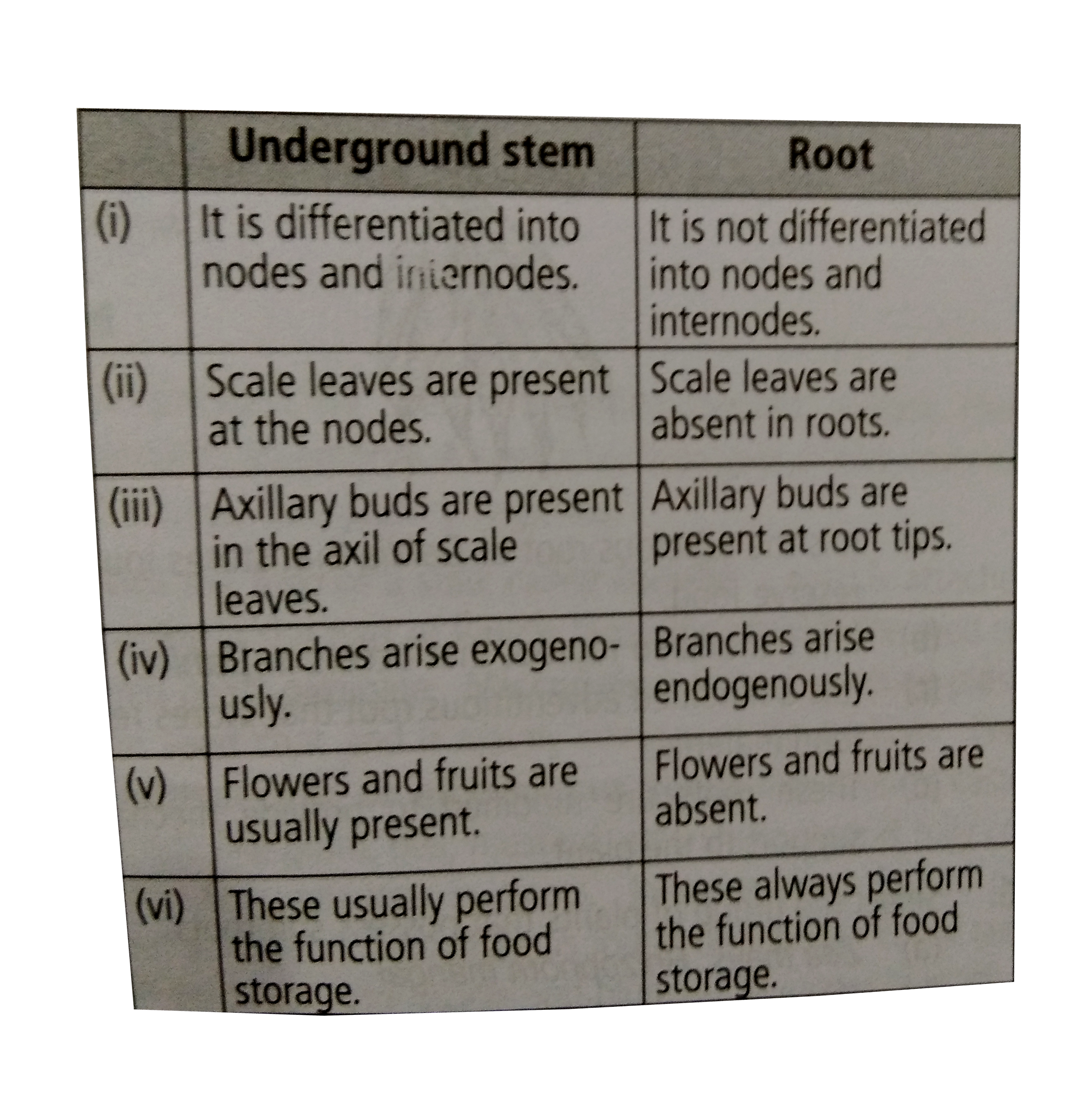Stem in ferns is underground, monopodial root stock and called
rhizome
corm
bulb
sucker
The correct Answer is:A
Step-by-Step Solution:
1. Understanding the Structure of Ferns:
- Ferns are vascular plants that reproduce via spores and have a unique structure. They typically have a stem that can be found above or below ground.
2. Identifying the Type of Stem:
- In ferns, the stem is often found underground. This underground stem is known for its ability to grow horizontally.
3. Defining Monopodial Growth:
- Monopodial growth refers to a type of growth where there is a single main stem that grows continuously, producing side branches. In ferns, this characteristic is present in their underground stems.
4. Recognizing the Correct Term:
- The specific term used for the underground monopodial rootstock in ferns is "rhizome." Rhizomes are specialized stems that grow horizontally beneath the soil surface.
5. Eliminating Other Options:
- The other options provided (comb, bulb, sucker) do not accurately describe the underground stem of ferns.
- A bulb is a storage organ found in some plants.
- A sucker refers to a shoot that arises from the base of a plant or from its roots.
- A comb does not relate to plant structures.
6. Conclusion:
- Therefore, the correct answer to the question is "rhizome," as it accurately describes the underground monopodial rootstock of ferns.
Final Answer:
The stem in ferns is underground, monopodial rootstock and is called rhizome.
- Ferns are vascular plants that reproduce via spores and have a unique structure. They typically have a stem that can be found above or below ground.
- In ferns, the stem is often found underground. This underground stem is known for its ability to grow horizontally.
- Monopodial growth refers to a type of growth where there is a single main stem that grows continuously, producing side branches. In ferns, this characteristic is present in their underground stems.
- The specific term used for the underground monopodial rootstock in ferns is "rhizome." Rhizomes are specialized stems that grow horizontally beneath the soil surface.
- The other options provided (comb, bulb, sucker) do not accurately describe the underground stem of ferns.
- A bulb is a storage organ found in some plants.
- A sucker refers to a shoot that arises from the base of a plant or from its roots.
- A comb does not relate to plant structures.
- Therefore, the correct answer to the question is "rhizome," as it accurately describes the underground monopodial rootstock of ferns.
The stem in ferns is underground, monopodial rootstock and is called rhizome.
Topper's Solved these Questions
- PLANT GROWTH AND DEVELOPMENT AND PLANT MOVEMENTS BOOK - TRUEMEN BIOLOGY ENGLISHCHAPTER - PLANT GROWTH AND DEVELOPMENT AND PLANT MOVEMENTS EXERCISE - MULTIPLE CHOICE QUESTIONS
158 Videos
- Plant Morphology & Reproduction BOOK - TRUEMEN BIOLOGY ENGLISHCHAPTER - Plant Morphology & Reproduction EXERCISE - ASSERTION AND REASON
64 Videos
Similar Questions
Knowledge Check
Read the given statements and select the correct ones.
(i) Root caps are present in prop roots.
(ii) Pneumatophores helf to get oxygen for respiration.
(iii) Edible part of ginger is underground stem.
(iv) Hydrophytes usually possess a well developed root system.A(i) and (ii) onlyB(ii) and (iii) onlyC(i),(ii) and (iii)D(i),(ii),(iii) and (iv)
A thick fleshy underground horizontal main stem is
View SolutionIn which of the following type of underground modification of stem, storage of food does not occur in stem ?
View SolutionThick underground stem growing parallel to soil surface is
View SolutionEndodermis of dicot stem is also called
View SolutionGiven are some difference between an underground stem and a root. Select the option that identifies the incorrect pair of differences.

View SolutionWhich of the following statements is/are true
(A) It the stem is jointed with solid nodes and hollow internodes, it is called caudex
(B) In Tridax the stem is decumbent
(C) Corn is a condensed form of rhizome growing more or less in vertical direction
(D) Sucker is an underground modification of stem
(E) Biparous type of cymose branching is seem in Saraca.
View SolutionHow will you identify underground stem from a root?
View Solution
